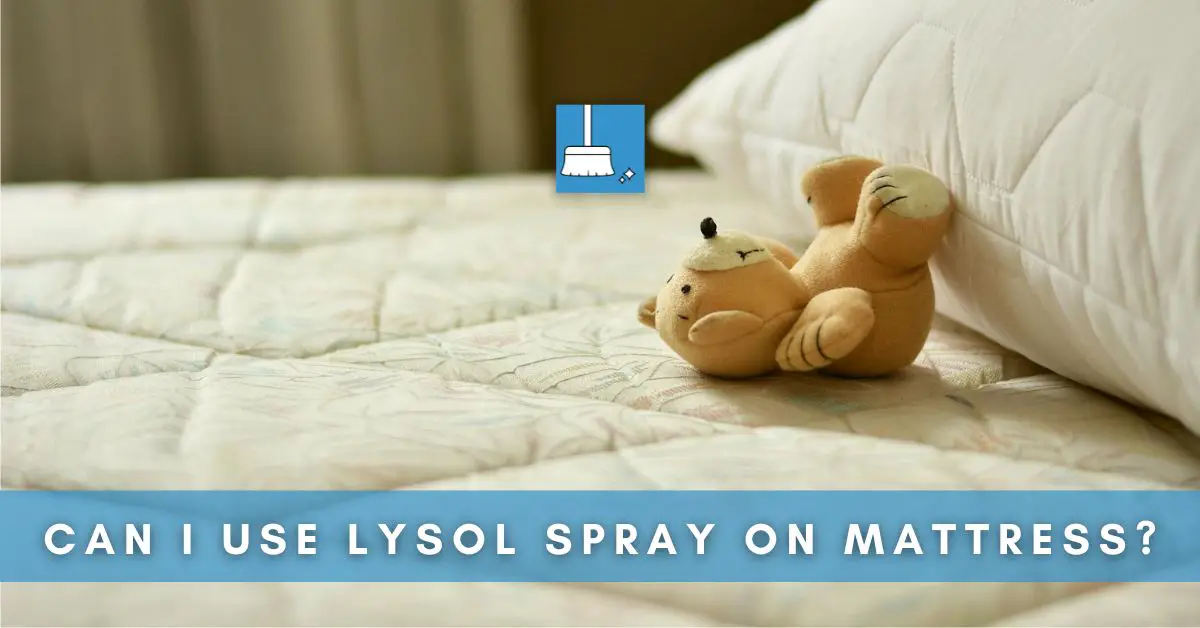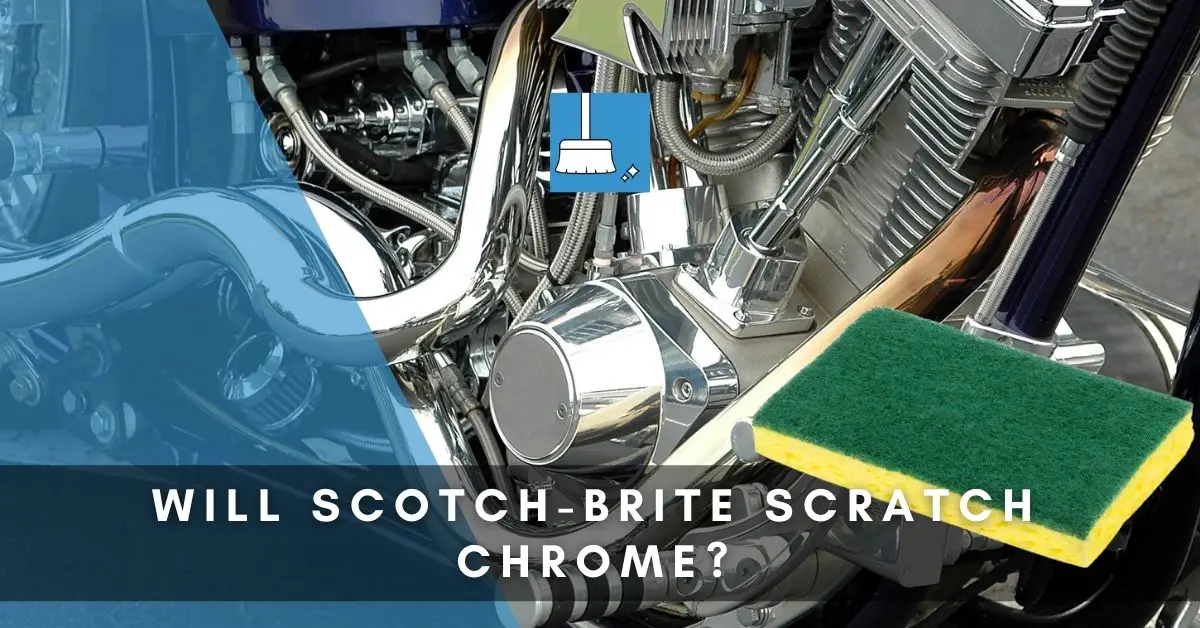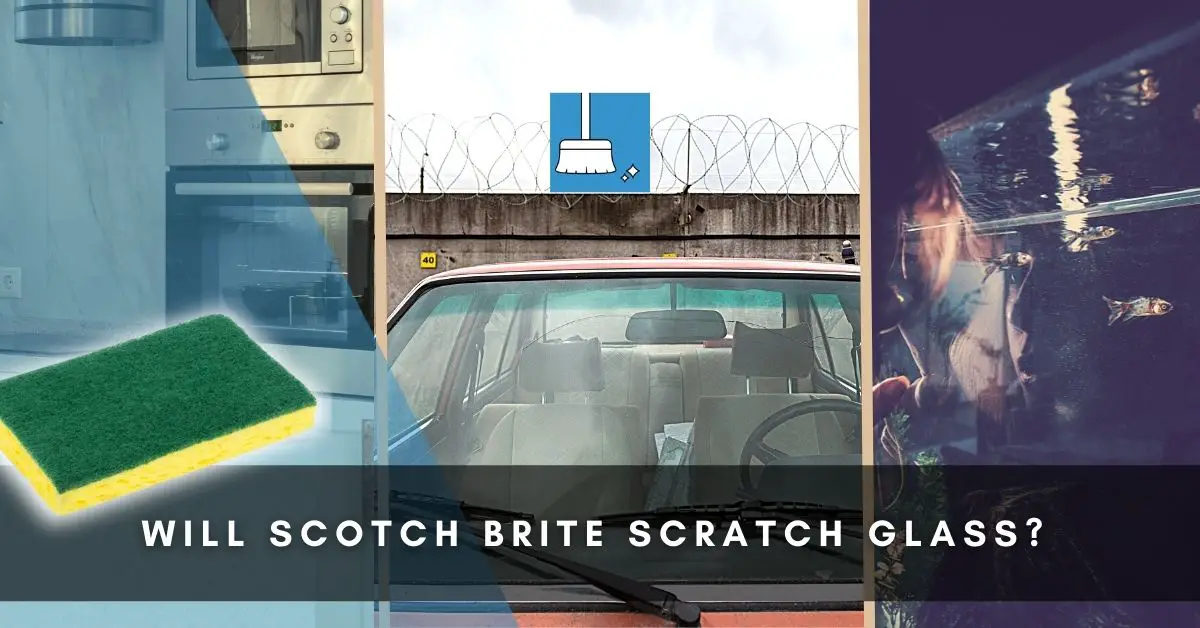As much as you try to keep your mattress and bedroom tidy, things can get pretty messy. And chances are you do a little more than sleep in your bed. From snacking to cuddling with pets or loved ones and just chilling with Netflix, there is plenty of room for beds to get dirty.
Even if your mattress does not physically look messy, a recap of the things you’ve done since the last time you cleaned it should give you an idea of its state. Dead skin cells from your body when sleeping also makes your mattress dirty.
So if you use the popular cleaning brand Lysol, you may wonder whether or not the spray is suitable for cleaning your mattress. From this article, you’ll find out if you can use Lysol spray on your mattress, how you should use it, its effects, and alternatives.
Can I Use Lysol Spray on Mattress?
You can use Lysol spray on a mattress, and it can perform various functions, such as disinfecting, sanitizing, and even deodorizing it. Not only can you use Lysol on your mattress, but Lysol also has a dedicated spray for fabrics that you can use on other beddings like sheets, pillows, etc.
Lysol Spray on the Mattress (4 Reasons To Use & 3 Not To)
Here are a few pros and cons of using Lysol Disinfectant spray on mattresses:
Why Spray Lysol on Mattresses
1- Spraying Lysol on your mattress is a fast way to disinfect it
2- Your mattress will dry faster
3- It will deodorize the mattress
4- The fabric sanitizer spray won’t leave any residue on your mattress
Why Think Twice before Spraying
1- Inhaling Lysol is not healthy
2- It won’t remove stains from the mattress
3- There are safer alternatives
How will Lysol Spray Affect the Mattress Fabric?
Generally, sprays that are not specifically made for fabrics may damage them. Therefore, it may be best not to use Lysol all-purpose spray on your mattress. Instead, go for the fabric sanitizer spray.
Lysol disinfectant spray may fade delicate fabric like your mattress, discolor it and even give the mattress a funny smell. If you sleep in it, the smell could also transfer to your body, so it’s best to avoid it.
To confirm whether Lysol disinfectant spray or fabric sanitizer will damage your mattress fabric, you can test it on a tiny corner of your mattress and wait for an hour. If it has no damaging effect, you can proceed to spray the larger surface of the mattress.
Does Lysol Spray Leave a Residue on Mattress Fabric?
Lysol spray may leave some residue on your mattress or other soft surfaces you spray it on. This depends on how much you spray on the mattress. If you spray lightly over the surface, it is unlikely to happen.
However, if Lysol leaves a stain on your mattress, you can use a spot remover to take care of it. Before applying the spot remover to the stain, use a cloth or paper towel to absorb as much excess wetness as possible. Next time, try not to oversaturate your mattress with the spray.
You can also use one of the suggested DIY mattress cleaners mentioned later in the article.
What About Killing Germs on the Mattress?
Lysol kills 99.9% of germs (bacteria and viruses) on SOFT surfaces such as mattresses, cushions, and sofas.
To allow Lysol to effectively kill germs on your mattress, you’ll have to remove any particles with a hand vacuum. Then follow the instructions on the body of the spray.
What Happens When Your Skin Comes in Contact With Lysol Spray?
1- Freshly Sprayed Mattress
If you sleep on a mattress freshly sprayed with Lysol, you will likely have skin irritations, inflammation, and burning sensations. (Source)
Some of Lysol’s ingredients are allergens, others are irritants, and some are toxic to humans. Therefore, your skin will probably react to prolonged contact.
Your skin is porous and would likely absorb some of the product’s chemicals, leading to inflammation, burning sensations, and other less predictable skin reactions.
2- Dried Disinfectant
The dried Lysol disinfectant is unlikely to affect one’s skin. Lysol advises users to wait for their beddings, mattress, or other sprayed item to dry completely before using them.
If you adhere to this and sleep on a mattress with dried Lysol, nothing should happen to your skin. This is because the active ingredients that could potentially cause harm to your skin are not effective again when the disinfectant has dried.
3- An Over-sprayed Mattress
An over-sprayed mattress subjects you to the same effects as a wet, freshly sprayed mattress.
If your skin comes in contact with a mattress that is over-saturated with Lysol, the effects may be even more unpleasant. This is because of exposure to an excess amount of the chemicals on your skin.
Lysol was not made for human consumption, and manufacturers warn customers to avoid skin contact.
Effects of Inhaling Lysol Disinfectant Spray
You shouldn’t be inhaling a disinfectant spray, but if you do, there might be some unpleasant repercussions. Disinfectant sprays such as Lysol are not supposed to enter the body and may contain chemicals toxic to humans. Some are known to have respiratory effects like asthma and irritation and may be corrosive to the lungs. (Source)
Also, most disinfectant sprays have volatile organic compounds that evaporate fast and can be inhaled into the body. The Environmental Protection Agency (EPA) claims that exposure to some of these compounds can irritate the nose, and throat, cause incoordination, liver damage, cancer, kidney damage, and damage to the central nervous system.
In conclusion, the effect of inhaling a disinfectant spray depends on the amount you inhale, and it also depends on the chemical content of the particular disinfectant brand.
Inhaling a small amount of Lysol may not affect you or cause mild coughing. Meanwhile, constant exposure might lead to more severe health issues.
How Long Does It Take for Lysol To Dry on Mattress?
This really depends on how ventilated the room where you used the Lysol is. With proper ventilation, it could dry in about an hour or less. Otherwise, it could take much longer, and you may end up making your bed back while the mattress is still wet, which is wrong.
Sanitize a Mattress! (The Best Way)
After a mattress is used by someone infected with Covid 19, it is important to sanitize it. Even when you are unsure that the person was infected, it is better to be cautious.
There are two important parts to sanitizing the mattress.
The first thing to do is to clean, and the second is to disinfect. You won’t be able to access the mattress to clean the inside, so you have to disinfect it to kill the possible germs that may be there.
1- To Clean the Mattress
Step 1: You should remove any beddings to clean the mattress’s surface effectively. Wash them immediately with soap and hot water and handle them with great care so that you don’t contract the virus or spread it.
Step 2: Vacuum the surface of the mattress because the dirt can prevent the disinfectant from effectively penetrating.
Step 3: Wash any soiled areas on the mattress with soap and water and allow it to dry. Now the next thing to do is to disinfect it by spraying the product on the surface of the mattress. Allow the mattress to air dry or vacuum it if need be.
To Disinfect the Mattress
Step 1: Get an approved disinfectant that kills the covid-19 virus, like Lysol. It is also better to get a disinfectant that you do not need to wipe off to prevent contaminating it with other germs.
Step 2: Spray all around the mattress and make sure not to leave any part out. The disinfectant will penetrate the mattress and kill germs inside it since it is permeable.
Step 3: Leave the mattress until it is dry. Avoid using a cleaner and disinfectant that has ingredients that can affect the surface type you want to use it on. If unsure, do a spot test before using it on the whole mattress.
DIY Mattress Disinfectant Spray (Lysol Alternate)
1- Hydrogen Peroxide & Water
The mixture of hydrogen peroxide and water is commonly used to disinfect wounds; some even use it as a mouthwash.
It is relatively safer for consumer use than Lysol is. Also, it is cheaper. Chances are that you already have it at home.
To use it as a disinfectant spray:
1- Mix the hydrogen peroxide and water in equal parts and put them in a spray bottle.
2- Then spray it over your mattress. You must have removed the sheets and visible specs of dirt from the mattress.
3- You can allow the mixture sprayed to sit on your mattress for about an hour.
4- Then, wipe off your mattress and allow it to air dry.
If trying to remove a specific stain:
1- Add dish soap and baking soda. Also, replace regular water with warm or hot water.
2- Spray it on the specific stain you are trying to remove and use a small brush, maybe a toothbrush, to scrub out the stain.
3- Then, add clean water to the surface and soak up as much moisture as possible with a cloth.
4- Leave the mattress to air dry afterward. You can also vacuum the residue off.
2- Baking Soda & Essential Oil
This is great for both sanitizing and deodorizing. You can use any of your favorite essential oils in this mix.
1- Remove the bedding completely from your mattress, and don’t forget to remove any visible dirt. You can vacuum the bed before cleaning it. Put the bedding in the washing machine and start a cycle.
2- Then mix baking powder and a few drops of essential oil in a spray bottle. Make sure you gauge an amount that will be enough to go around your mattress.
3- Spray this mixture over your mattress, spraying the sides and underneath. Leave the mixture on your mattress for a while. If you are washing your bedding, leave the baking soda on until the bedding is fully washed.
4- Then, vacuum the residue from the mattress, let it fully dry, and make your bed back.
3- Vinegar, Baking Soda, & Water
As a popular home cleaning product, vinegar also shines when cleaning mattresses. It will especially come in handy in removing stains and odors.
1- You must remove your bed linen and any visible dirt specs first.
2- Then mix water and vinegar in equal parts and spray it on the particular stain if there is one or generally on your mattress.
3- Use a cloth to blot out the stains and wipe the surface of your mattress. You can put a little baking soda on the stained surface and leave the mattress for a few minutes.
4- Then vacuum the mixture out of the mattress.
The Takeaway!
Lysol spray is an option for cleaning your mattress. However, it would be best if you went for their fabric sanitizer or used a homemade cleaning option.
If you’re concerned about the bedding, remember that a good wash with soap and water is more than enough to sanitize them.
Also, if you are using Lysol, don’t forget to follow the instructions on the body of the product. Doing this will ensure you get the best results in your mattress cleaning.







Pingback: Can You Spray Lysol On Clothing? (4 Reasons!) »